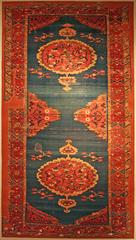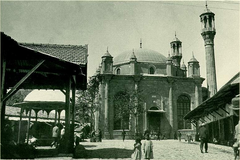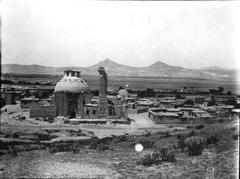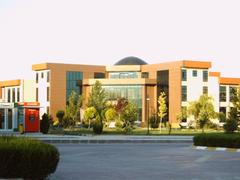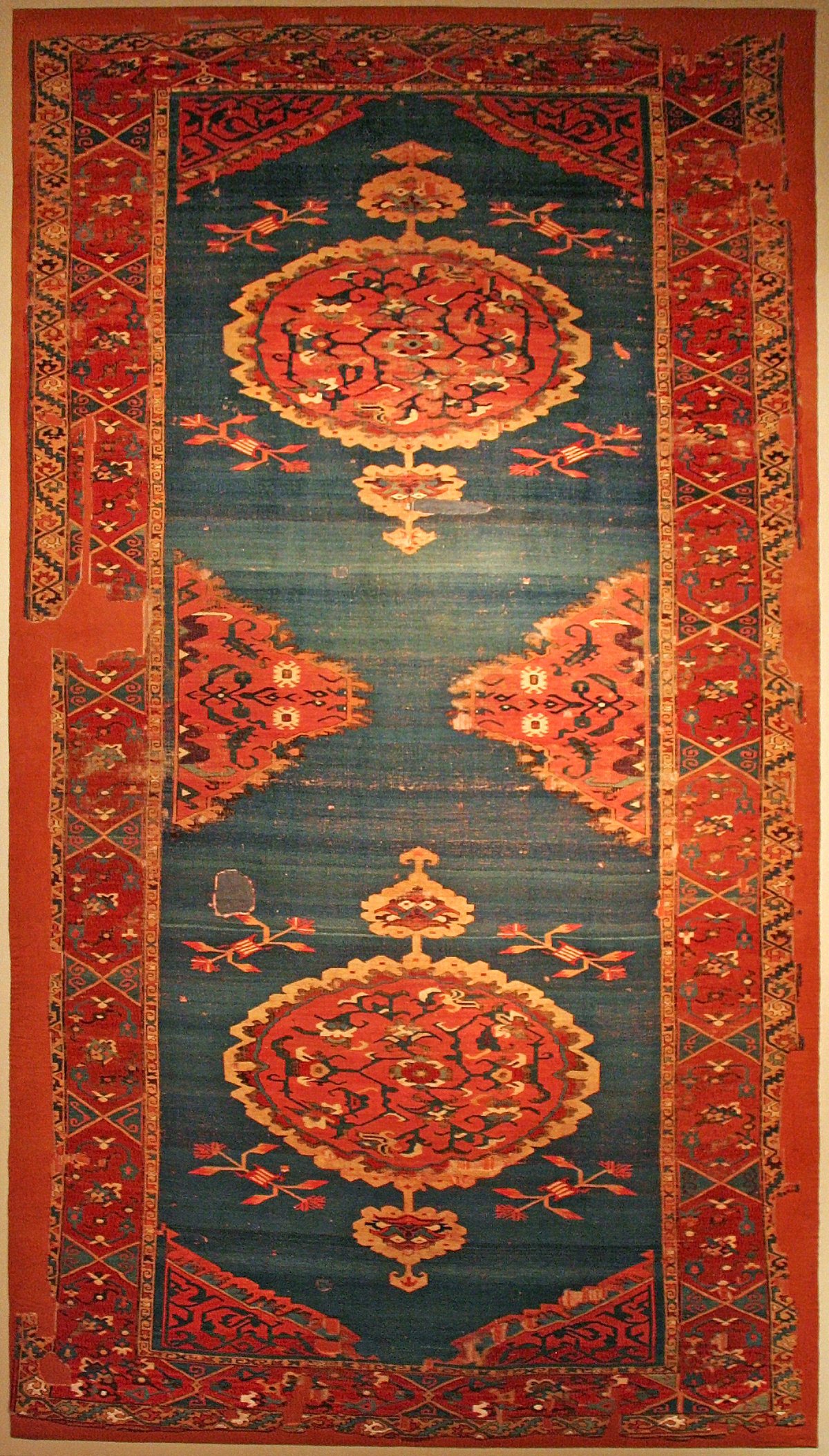
Alâeddin Mosque Konya: Visiting Hours, Tickets, and Historical Significance
Date: 14/06/2025
Introduction
Nestled atop Alâeddin Hill in the heart of Konya, Turkey, the Alâeddin Mosque (Alâeddin Camii) stands as a remarkable testament to Seljuk architecture and Anatolian Islamic heritage. As one of the oldest and most significant Seljuk monuments in Anatolia, this mosque encapsulates a century of architectural evolution, political history, and spiritual life. Constructed initially in the early 12th century under Sultan Mesud I and expanded by Sultan Alâeddin Keykubad I in the 13th century, the mosque blends intricate stone carvings, repurposed Byzantine columns, and exquisite tilework. It also played a critical role as the principal congregational mosque of the Seljuk Sultanate of Rum, hosting royal ceremonies and Friday prayers.
Today, the Alâeddin Mosque welcomes visitors daily with free admission, offering guided tours and a serene atmosphere. Its central location, near other key Konya attractions such as the Mevlana Museum and Konya Archaeological Museum, makes it a focal point for history enthusiasts and cultural travelers. This comprehensive guide will provide detailed insights into the mosque’s history, architectural highlights, visitor logistics, and tips for enriching your experience at one of Konya’s most treasured landmarks.
Table of Contents
- Historical Background
- Site Layout and Setting
- Architectural Features
- Royal Mausoleums
- Visiting Information
- Nearby Attractions
- Restoration and Conservation
- Visitor Experience
- Frequently Asked Questions (FAQ)
- Conclusion
- References
Historical Background
Origins and Early Construction
The Alâeddin Mosque is among the oldest surviving examples of Seljuk architecture in Anatolia. Its construction began under Sultan Mesud I (r. 1116–1156) on the site of a former Byzantine acropolis, establishing Seljuk influence in central Anatolia (Turkish Ministry of Culture and Tourism). The original structure was modest, reflecting the transitional period of the Seljuk Sultanate of Rum.
Expansion under Sultan Alâeddin Keykubad I
During the reign of Sultan Alâeddin Keykubad I (r. 1220–1237), the mosque underwent significant expansion, transforming into an imperial complex. Classical columns and capitals, repurposed from earlier Byzantine and Roman buildings, were incorporated into the hypostyle prayer hall, enriching its aesthetic and symbolic value (Archnet). Inscriptions indicate the involvement of at least eight Seljuk sultans, reinforcing the mosque’s dynastic importance (Islamic Art and Architecture, 650–1250).
Architectural Features and Innovations
The mosque’s irregular floor plan is a result of its phased construction over more than a century. It features 42 columns—many spolia from previous civilizations—creating a unique blend of Seljuk, Byzantine, and Anatolian styles (Archnet). Highlights include a marble mihrab with intricate geometric motifs and a carved wooden minbar from 1155. The stone portal is adorned with muqarnas and distinctive tilework, epitomizing Seljuk artistry.
The Seljuk Imperial Mausoleums
In the mosque’s courtyard are the türbes (mausoleums) of several Seljuk sultans, including Sultan Alâeddin Keykubad I. Their octagonal forms, conical roofs, and decorative tiles symbolize dynastic legitimacy and architectural innovation (Konya Metropolitan Municipality).
Role in Seljuk Political and Religious Life
As Konya’s main congregational mosque in the 12th and 13th centuries, Alâeddin Mosque was central to Friday prayers, royal ceremonies, and public life, reflecting its status as a spiritual and political nucleus. While not directly connected to Rumi, the mosque is embedded within Konya’s broader Sufi and Islamic heritage (Mevlana Museum).
Later History: Ottoman and Modern Periods
The mosque continued to serve as a key religious site under the Karamanids and Ottomans, receiving important restorations, especially in the 19th century during the reign of Sultan Abdülmecid I. Modern conservation efforts have preserved its integrity, solidifying its place as a vibrant cultural and tourist attraction (GoTurkey).
Archaeological Discoveries and Conservation
Archaeological excavations beneath the mosque have revealed Byzantine and Roman strata, underscoring the site’s long-standing significance (Archnet). Ongoing conservation prioritizes structural stabilization and the restoration of decorative elements. The mosque is listed on the tentative UNESCO World Heritage list (UNESCO Tentative List).
Historical Significance in Anatolian Islam
The Alâeddin Mosque exemplifies the Seljuk transformation of Anatolia into an Islamic cultural and political center. Its enduring presence cements its role in the region’s medieval and spiritual heritage (Oxford Islamic Studies Online).
Site Layout and Setting
The mosque is the centerpiece of the Alâeddin Külliyesi, commanding panoramic views of Konya from its hilltop location (Archnet). Its irregular trapezoidal plan adapts to the natural contours of the hill, and monumental stairways connect the mosque to the surrounding urban landscape.
Architectural Features
Exterior
- Facade and Portals: The main north portal (taçkapı) features Seljuk stone carvings, geometric and vegetal motifs, and muqarnas vaulting (Archnet).
- Minaret: The slender minaret, decorated with turquoise tiles and brick calligraphy, was added in the 13th century and serves as a prominent city landmark.
- Courtyard and Colonnades: The courtyard includes arcaded porticoes supported by spolia columns with Byzantine and Roman capitals.
Interior
- Hypostyle Prayer Hall: The vast hall is supported by 42 diverse columns, creating a forest-like ambiance. The flat timber ceiling, originally painted, adds to the space’s distinctive character.
- Mihrab and Minbar: The marble mihrab features arabesque patterns and Kufic inscriptions, while the wooden minbar showcases intricate Seljuk woodwork.
- Dome and Skylights: Rather than a single central dome, the mosque incorporates small domes and clerestory windows for soft interior lighting.
Decorative Elements
Seljuk stone carving, geometric motifs, stylized foliage, and calligraphic bands adorn the mosque’s portal, mihrab, and window frames. The tiled minaret and selected interior features introduce vibrant turquoise and cobalt blue tones (Archnet).
Royal Mausoleums
Adjacent to the mosque’s southern wall, the royal mausoleum (kümbet) houses the tombs of eight Seljuk sultans, including Sultan Alâeddin Keykubad I. The mausoleums’ octagonal designs and conical roofs are significant examples of Seljuk funerary architecture (Konya Metropolitan Municipality).
Visiting Information
Visiting Hours
- Open Daily: 8:00 AM to 6:00 PM
- Note: Hours may vary during religious holidays or special events. Always check the official Konya tourism website for updates.
Tickets and Admission
- Entrance Fee: Free for all visitors. Donations are appreciated to support conservation.
Accessibility
- Wheelchair Access: Available at the main entrance. Some uneven surfaces and stairs may pose challenges; assistance is available upon request.
Guided Tours
- Languages: Multiple languages available via local agencies or the tourism office.
- Recommendation: Guided tours greatly enhance understanding of the mosque’s history and architecture.
Photography
- Policy: Photography without flash is permitted. Tripods and commercial photography require special permission. Please be respectful during prayer times.
Visitor Tips
- Dress modestly, covering shoulders and knees.
- Visit early in the morning or late afternoon for a quieter experience.
- Combine your visit with a tour of nearby attractions.
Nearby Attractions
- Mevlana Museum: The tomb of Rumi and a center of Sufi heritage (Mevlana Museum).
- Ince Minare Museum: Former madrasa known for Seljuk stone carvings.
- Karatay Medrese: Renowned for its tilework.
- Konya Archaeological Museum: Exhibits from Konya’s ancient and medieval past.
- Alaeddin Hill Park: Panoramic city views.
Restoration and Conservation
The mosque has undergone several restoration projects to safeguard its structure and decorative elements. Its inclusion on the tentative UNESCO list highlights its outstanding universal value and ongoing preservation efforts (UNESCO Tentative List).
Visitor Experience
Visitors are often captivated by the tactile quality of ancient stone and wood, the blend of architectural styles, and the mosque’s commanding hilltop setting. The Alâeddin Mosque offers a unique window into Anatolian Islamic architecture and Seljuk history.
Frequently Asked Questions (FAQ)
Q: What are the Alâeddin Mosque visiting hours?
A: The mosque is open daily from 8:00 AM to 6:00 PM.
Q: Is there an entrance fee?
A: No, entrance is free for all visitors.
Q: Are guided tours available?
A: Yes, guided tours are available in multiple languages and are highly recommended.
Q: Is the mosque accessible for people with disabilities?
A: The mosque is partially accessible; some uneven surfaces and stairs may require assistance.
Q: Can I take photographs inside?
A: Photography without flash is allowed. Please be respectful during prayers.
Conclusion
The Alâeddin Mosque is more than an architectural marvel; it is a living monument reflecting the Seljuk era’s spiritual, political, and artistic legacy. Whether you are a history enthusiast, architecture lover, or cultural traveler, exploring this iconic Konya historical site offers a journey into the heart of Anatolian Islamic heritage. Plan your visit to admire its ancient columns, exquisite stonework, and serene ambiance.
To maximize your experience, consider joining a guided tour, visiting during quieter hours, and respecting the mosque’s role as a place of worship. For the latest visitor information and travel tips, consult the official Konya tourism website, and enhance your visit with the Audiala app for guided tours and insider tips.
Image 1: Exterior view of Alâeddin Mosque atop Alaeddin Hill with city panorama (alt=“Alâeddin Mosque visiting hours exterior view”)
Image 2: Interior view showing Seljuk tilework and Byzantine columns (alt=“Alâeddin Mosque tickets interior architectural details”)
Interactive Map: Location of Alâeddin Mosque and nearby Konya historical sites
References
- Turkish Ministry of Culture and Tourism
- Archnet
- Konya Metropolitan Municipality
- Mevlana Museum
- Oxford Islamic Studies Online
- GoTurkey
- Discover Islamic Art
- The Complete Pilgrim
- Len Journeys
- Konya Tourism Official Site
